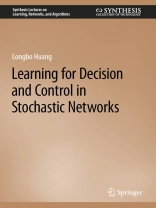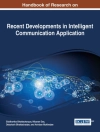This book introduces the Learning-Augmented Network Optimization (LANO) paradigm, which interconnects network optimization with the emerging AI theory and algorithms and has been receiving a growing attention in network research. The authors present the topic based on a general stochastic network optimization model, and review several important theoretical tools that are widely adopted in network research, including convex optimization, the drift method, and mean-field analysis. The book then covers several popular learning-based methods, i.e., learning-augmented drift, multi-armed bandit and reinforcement learning, along with applications in networks where the techniques have been successfully applied. The authors also provide a discussion on potential future directions and challenges.
Содержание
Introduction.- The Stochastic Network Model.- Network Optimization Techniques.- Learning Network Decisions.- Summary and Discussions.
Об авторе
Longbo Huang, Ph.D. is an Associate Professor at the Institute for Interdisciplinary Information Sciences (IIIS) at Tsinghua University, Beijing, China. He received his Ph.D. in EE from the University of Southern California, and then worked as a postdoctoral researcher in the EECS dept. at University of California at Berkeley before joining IIIS. Dr. Huang previously held visiting positions at the LIDS lab at MIT, the Chinese University of Hong Kong, Bell-labs France, and Microsoft Research Asia (MSRA). He was also a visiting scientist at the Simons Institute for the Theory of Computing at UC Berkeley in Fall 2016. Dr. Huang’s research focuses on decision intelligence (AI for decisions), including deep reinforcement learning, online learning and reinforcement learning, learning-augmented network optimization, distributed optimization and machine learning.












